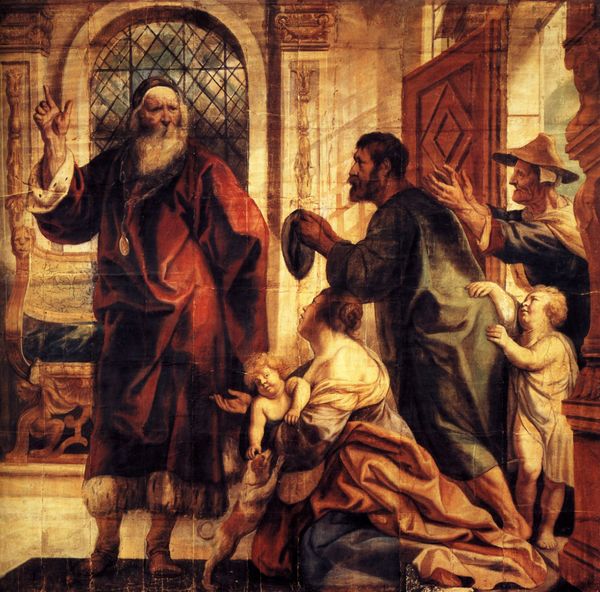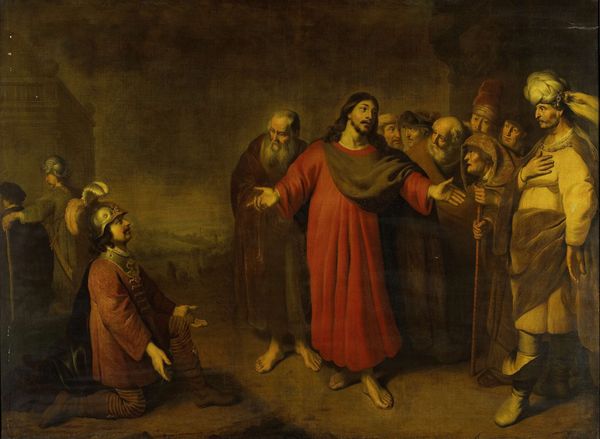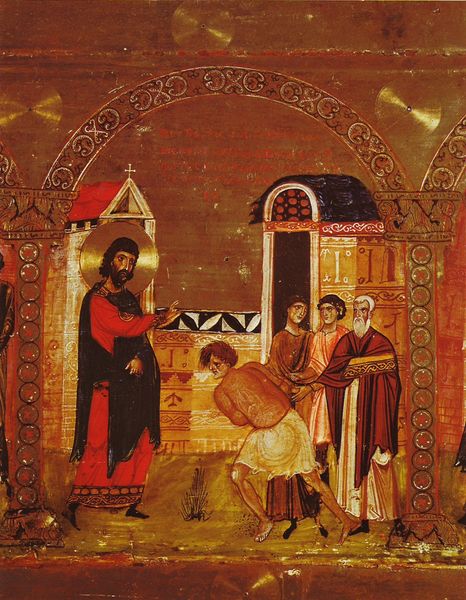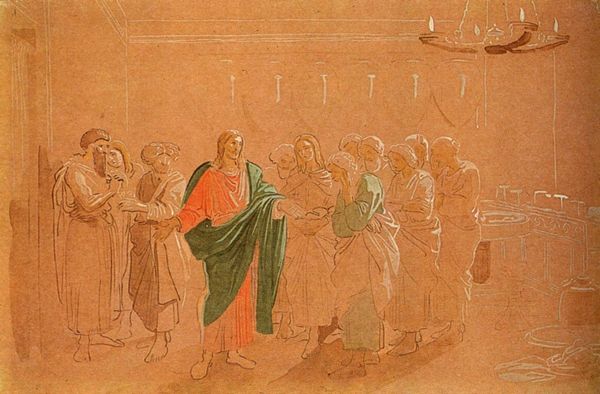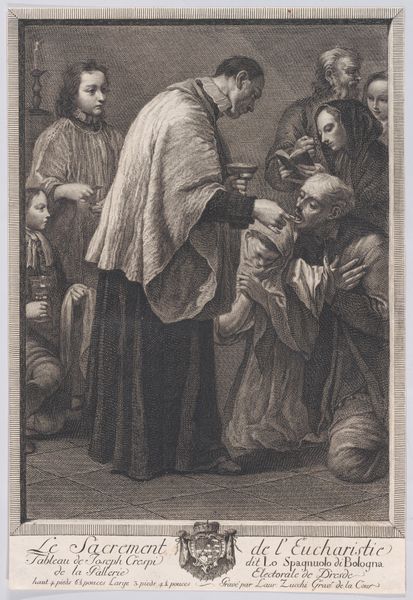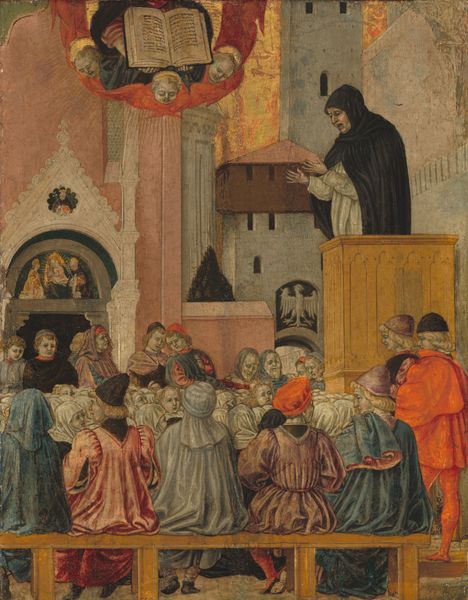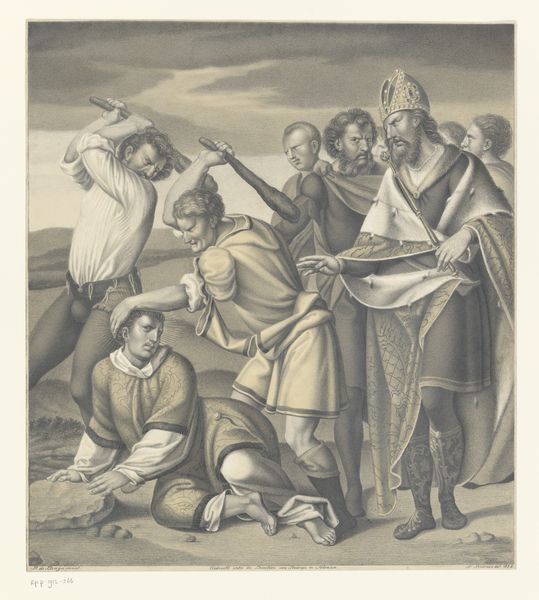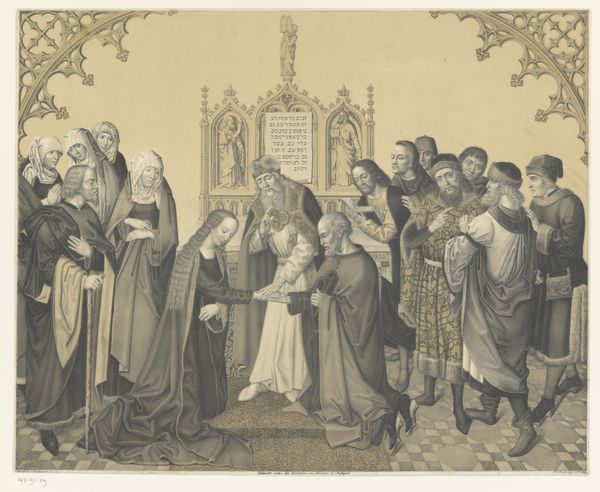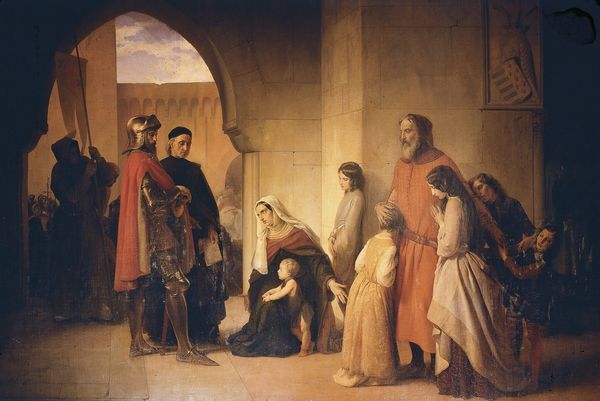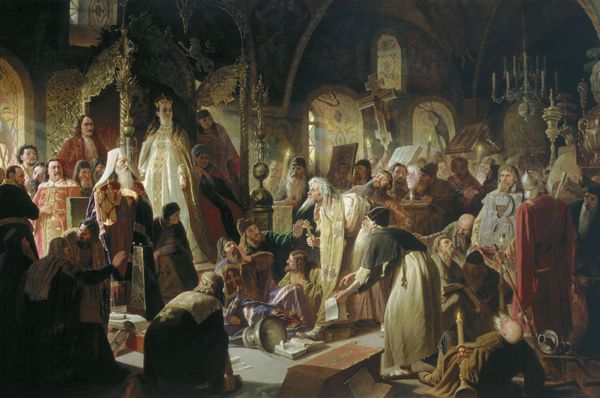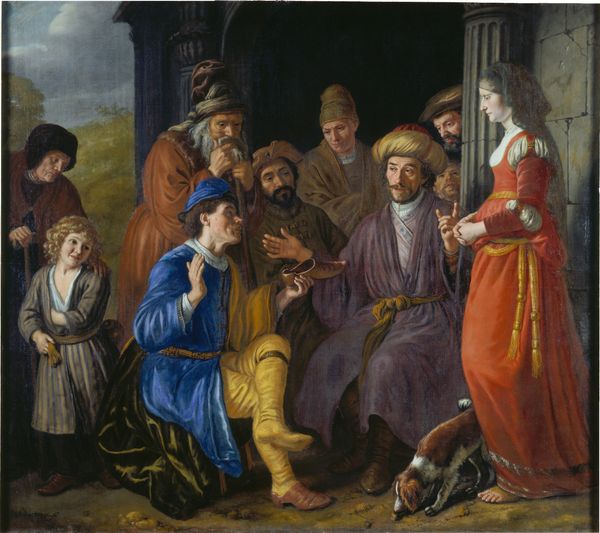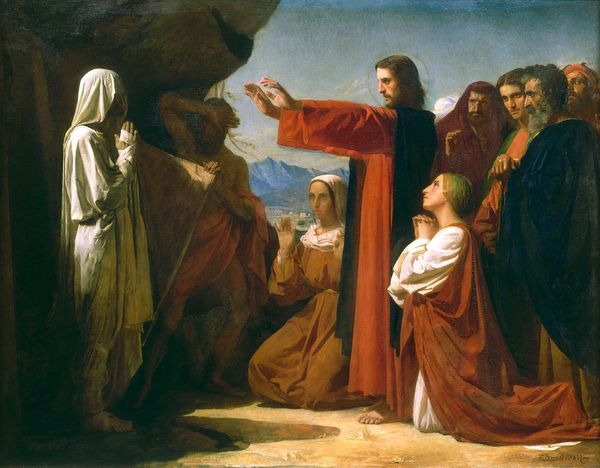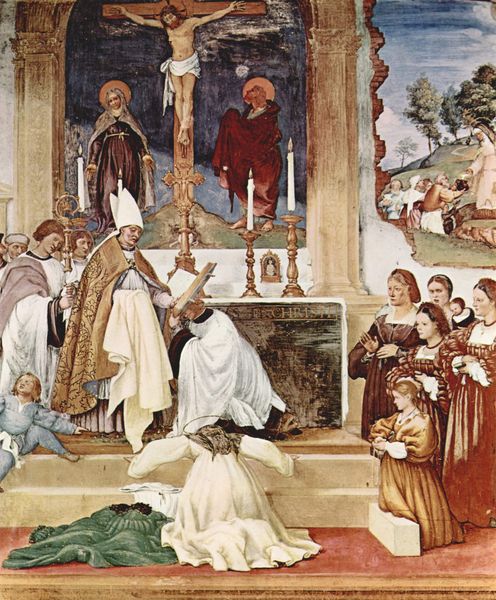
John Wycliffe reading his translation of the Bible to John of Gaunt 1847
0:00
0:00
fordmadoxbrown
Bradford Museums and Galleries, Bradford, UK
oil-paint
#
portrait
#
narrative-art
#
oil-paint
#
oil painting
#
underpainting
#
group-portraits
#
romanticism
#
christianity
#
history-painting
#
pre-raphaelites
Dimensions: 153 x 119.5 cm
Copyright: Public domain
Editor: This is "John Wycliffe reading his translation of the Bible to John of Gaunt," painted by Ford Madox Brown in 1847. It's an oil painting currently housed at the Bradford Museums and Galleries. The scene feels staged but there is something in Wycliffe's piercing eyes that hints at some drama beyond what is initially portrayed in the composition. What do you see in this piece, beyond the historical representation? Curator: Beyond the surface, I sense a quiet revolution brewing. The soft light feels deliberate, not just to illuminate but to almost consecrate Wycliffe, doesn't it? He stands so steady, doesn't he? This one figure, amid a sea of richly-clad nobles who don’t seem to recognize how soon their world is about to turn upside down... The artist is making an overt political comment that touches me. Brown seems less interested in pageantry than in something much more vulnerable. I wonder if this is related to what artists since then try to address: do our ideas shape history? Or, is it history that shapes what we believe? Do you see this at all? Editor: Yes, I can see that now that you point it out. Wycliffe looks to be at the still point in a turning world. It almost makes him more prominent, rather than the benefactor, Gaunt, the center of the court...it is a bit heavy-handed but it's also part of the Romantic era style, isn’t it? To insert some grand political statements to historical pieces. Curator: Perhaps "heavy-handed," yet earnestly felt. It's a testament to Brown’s courage—perhaps a naïve courage! It's this transparency, this vulnerable conviction, that I find so very disarming in the Pre-Raphaelites. They saw truth as beauty. In a sense, they did not compromise with power, even while painting the powerful, eh? This painting almost serves as a bridge, doesn't it, between historical record and personal belief. Editor: Definitely. I hadn’t considered the transparency angle of the Pre-Raphaelites before; it provides a whole new insight!
Comments
No comments
Be the first to comment and join the conversation on the ultimate creative platform.
